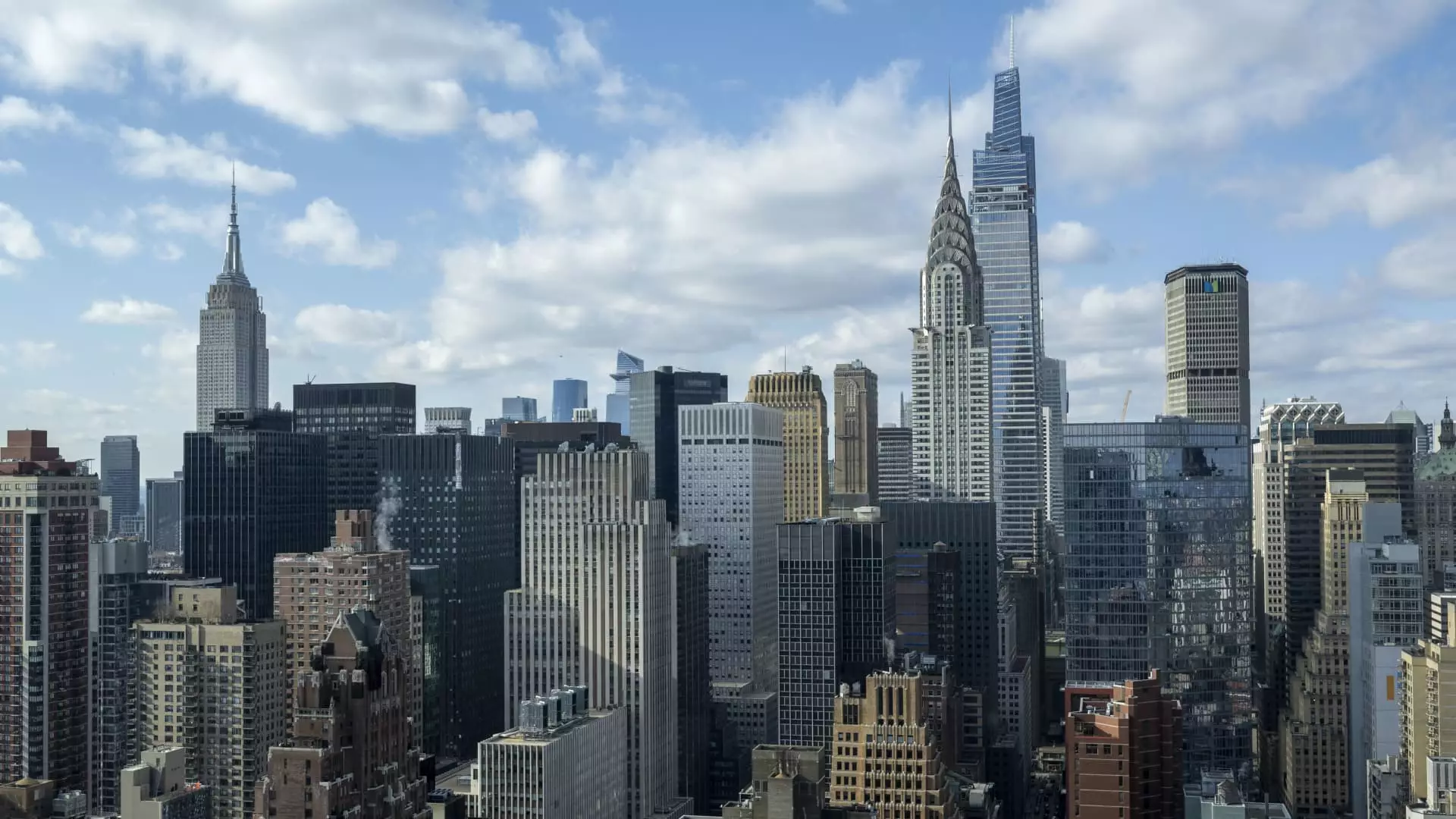As the world gradually emerges from the shadow of the COVID-19 pandemic, New York City is witnessing a remarkable rebound in its office space market. The confluence of increasing workforce numbers and a growing commitment from employers to bring their staff back to traditional work environments has led to a substantial resurgence in demand. A recent report from VTS reveals a striking 25% increase in office demand compared to the previous year, indicating a pivotal moment for the city’s commercial real estate sector.
The revitalization of office demand in New York is attributed to several key factors. First, the return of workers to their offices reflects a broader cultural shift—one that is particularly significant within the finance and technology sectors. According to Nick Romito, CEO of VTS, this trend illustrates how the unique economic landscape of New York is influencing workplace norms and strategies. As companies prioritize in-person collaboration, the desire for office space grows exponentially.
Moreover, the anticipation of robust employment growth is further encouraging real estate investments. The Office of Management and Budget in New York City projects approximately 38,000 new office-related positions by 2025, predominantly in sectors such as finance, business services, and information technology. Marc Holliday, CEO of SL Green Realty, emphasizes that each new hire represents vast new absorption in office space, hinting at a near-term surge in leasing activity.
Despite facing a slight miss in revenue expectations last quarter, SL Green Realty remains optimistic about the overall climate of the office market. The firm reported an occupancy rate of 92.5% at the end of the year, with forecasts suggesting an uptick beyond 93% in the coming year. This confidence is substantial, as high occupancy rates typically correlate with increased demand for space and reliable income streams.
A notable recent development in this landscape is IBM’s decision to expand its office at One Madison Avenue by an impressive 92,663 square feet. This move not only strengthens IBM’s presence in New York but also signals the tech giant’s commitment to nurturing an environment conducive to innovation and collaboration. Joanne Wright, IBM’s senior vice president, labeled the expansion as a strategic step towards enhancing New York’s technology sector.
While New York is at the forefront of this recovery trend, it’s essential to consider the performance of other cities as well. For instance, San Francisco has reported a notable demand growth rate of 32%, which eclipses New York’s figures but comes from a significantly lower baseline. Seattle and Chicago are also experiencing gains, albeit at a relatively moderate pace, with approximately 15% demand growth each. These trends reflect a national landscape undergoing gradual recovery, characterized by an evolution of workplace strategies to accommodate hybrid models.
Ryan Masiello, VTS’s chief strategy officer, underscores this duality in market dynamics by pointing out that while cities like New York are rapidly approaching pre-pandemic demand levels, the larger national picture remains one of cautious but steady recovery. The office market’s incremental growth is contrasted against a backdrop of national labor market challenges, leading to a nuanced view of the overall commercial real estate landscape.
As 2025 approaches, projections indicate that office demand will continue to rise as more employers adopt a hybrid model that necessitates regular in-office attendance. This indicates a positive shift in confidence among business leaders, who seem increasingly assured about committing to long-term office leases despite existing economic uncertainties.
New York City stands as a testament to resilience in the face of unprecedented challenges. The revival of office space demand presents a complex interplay of cultural, economic, and strategic factors that collectively underscore a transformative moment for the commercial real estate market. As businesses strategize around in-office collaborations, the office landscape will inevitably adapt, providing opportunities for innovation, growth, and engagement across various sectors. The journey ahead will be marked by a multitude of changes, yet the commitment to a vibrant office culture seems more robust than ever.

Leave a Reply